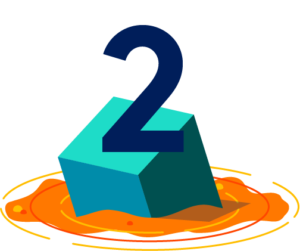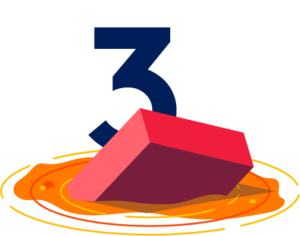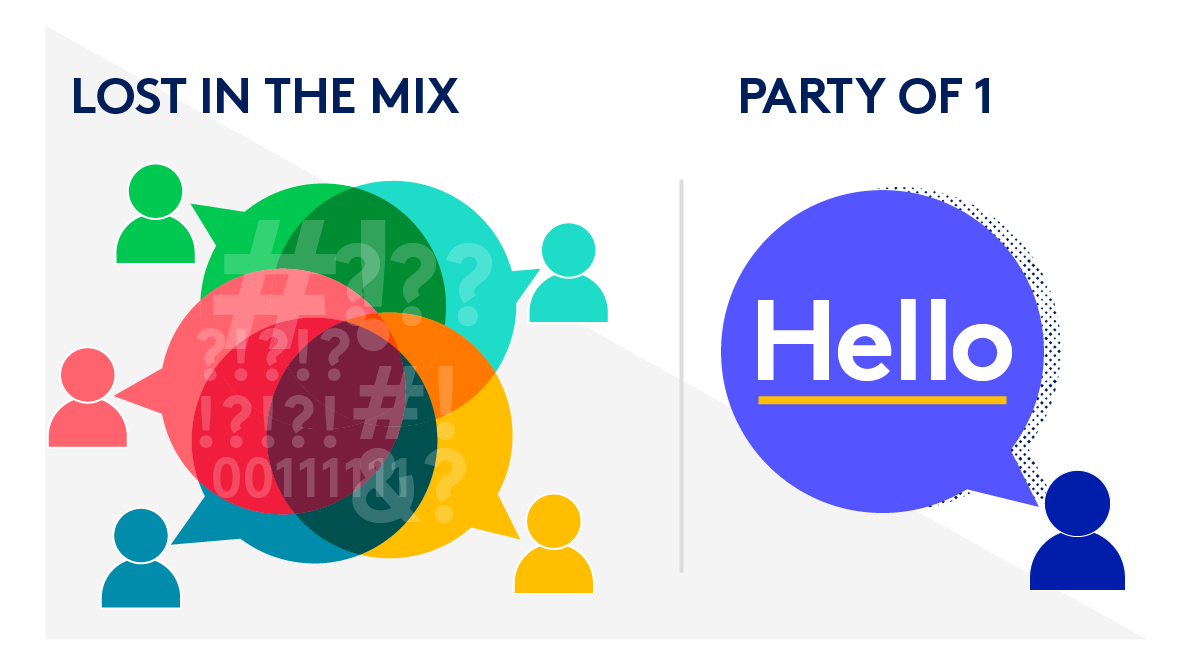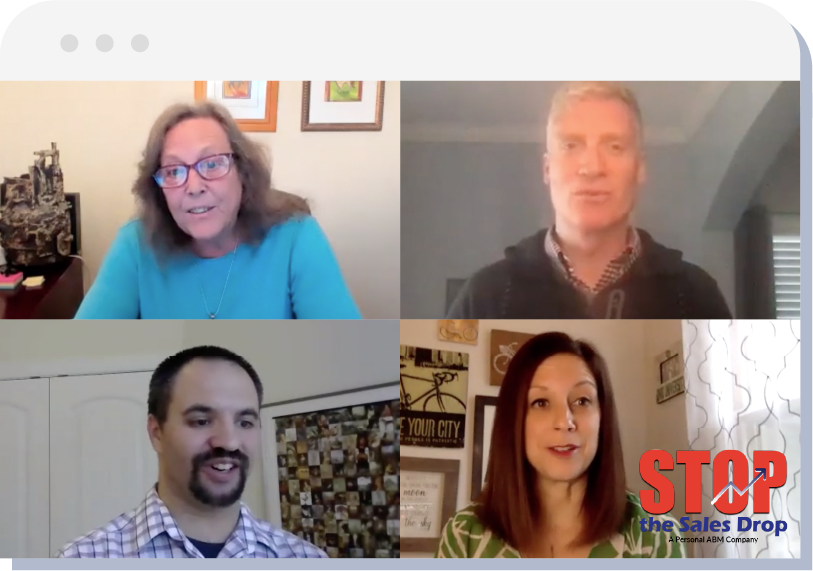
How Your B2B Content Programs Can Better Support ABM Throughout The Complete Buyer’s Journey
The B2B buyer’s journey is like the classic "floor is lava" game. Prospects are faced with multiple jumping points and risks of falling off course. Forging a fool-proof content path will help get your ABM target accounts to the finish line.
Account based marketing (ABM) is about winning, protecting, and expanding key accounts to provide the greatest revenue growth potential. In other words, it’s about getting new accounts to revenue – and existing accounts to even more revenue. While ABM is not a new concept, recent studies from eMarketer showed only 17% of B2B marketers worldwide said their ABM program was mature and driving strategic growth.
The other 83% mentioned that their biggest challenge is ensuring you have the right content for an ABM approach.
In reviewing content that organizations push out in social and email communications, I found that most content does not support ABM. It does not support sales in driving conversations and sales cycles with accounts that are stuck in status quo or in the funnel. It does not support account management and customer teams in their efforts to reduce churn, improve margin growth and increase customer lifetime value through account expansion. And, in most cases, the content is disjointed. It does not lead prospects to the next step once the top-of-funnel campaigns gets buyers excited about the ideas that the company holds so dear. As a result, buyers are feeling around in the dark. My recent article on the Content Marketing World blog explores my thinking in greater detail.
During a recent Stop the Sales Drop Podcast, Cassandra Jowett (PathFactory’s Senior Director of Marketing) mentioned that she likes to compare the buyer’s journey to the “floor is lava” game that kids play. You have all these jumping points to get buyers to the safe harbor and you want to make sure they don’t fall into the lava half-way through their journey. You want buyers to jump from one rock to the next one and so on and you want to lay out the path in a very clear way.
Below, you will see how you can leverage content and lay out the path to revenue for 4 different buyer journeys:
- Intent and engaged: Your target accounts showed intent and they are engaging with you.
- Intent but unengaged: Your target accounts showed intent but they either did not engage with your company or they stopped engaging.
- No intent, unengaged: Your target accounts do not show any signs of intent as they are part of the 60% of the market that is stuck in status quo.
- Existing customers: Your target accounts are existing customers that can provide you with the greatest revenue growth potential if you can retain and expand them.

Intent and engaged
For this group of buyers we need to segment based on past content that was consumed, past engagement and past behaviors and map out a journey that buyers can pull themselves through on their time — and not just when you send out a drip email. Now, this doesn’t mean to just provide “thought leadership” content on the subjects your target accounts are searching for. This “free consulting” content allows prospects to take free education, invite sales to the bidding process (along with your competition) and use the content to tell your competitors what they are looking for.
The buying journey content should include:
![]() “Middle” best practice content where you help prospects “shape” their strategy around your solution.
“Middle” best practice content where you help prospects “shape” their strategy around your solution.
![]() Teach for differentiation — Sharing articles, whitepapers, and case studies isn’t sufficient. Through a series of consecutive steps, marketers must relay information in meaningful ways that help prospects see a new path – toward signing a contract with your sales team. For prospects to see that path, they need to see your competitor-specific gaps and the impacts on companies, operations, employees, finance and customers.
Teach for differentiation — Sharing articles, whitepapers, and case studies isn’t sufficient. Through a series of consecutive steps, marketers must relay information in meaningful ways that help prospects see a new path – toward signing a contract with your sales team. For prospects to see that path, they need to see your competitor-specific gaps and the impacts on companies, operations, employees, finance and customers.
![]() Teach to outsource — Your prospects need to see “why” they should not take your information and try to overcome their challenges internally.
Teach to outsource — Your prospects need to see “why” they should not take your information and try to overcome their challenges internally.
![]() Enable internal conversations with articles and guides that speak to different roles like the CFO that has become the CF NO. As Julie Thomas talked about in a Reboot Friday panel, companies will have two sales cycles: one with their champion, and one with the CEO, CFO and COO who are all looking to cut back their investments after being blindsided by COVID-19.
Enable internal conversations with articles and guides that speak to different roles like the CFO that has become the CF NO. As Julie Thomas talked about in a Reboot Friday panel, companies will have two sales cycles: one with their champion, and one with the CEO, CFO and COO who are all looking to cut back their investments after being blindsided by COVID-19.

Intent but unengaged
If prospects are not engaging with your company and your content, it’s because you lacked personal relevance where you can make a personal connection with the buyers. They need more than persona-based content.
Most marketing teams (and the agencies they use) base their content, messaging and conversations on what prospects and customers tell them through their voice of the customer research and sales discovery. They are simply reacting and connecting pre-identified needs and wants with specific capabilities. It’s resulting in commodity messaging and price-based conversations as competitors are also responding to the same insights with similar capabilities, just worded differently.
- There is no competitive differentiation.
- Urgency is not created
- Buyers quit the journey because value propositions do not identify with their specific needs.
For these accounts, we need to go beyond “intention” data such as content consumption and look to understand why there was intention in the first place.
What are the company’s business goals and objectives? Who’s on the buying committee and what are their wins?
Once you know “why” there was intention, you can provide a “personal” journey that shows prospects their unconsidered gaps, the competitors gaps and how it would impact the business outcome they want. Now the story you tell in the content is their story.

No intent, unengaged
Most content is targeted at the 10% of the market that is already looking or they are open to buying. This part of the market leads to smaller margins as they have pre-defined needs and in many cases they are moving toward RFP (officially or unofficially) where they will focus on getting the most capabilities for the lowest price. There is very little content for the 30% of the market that is indifferent and the 30% of the market that thinks they aren’t interested. If you create a buying vision with this market, you will get significantly higher deal sizes and you will not have to worry about an RFP. You will be a party of 1.

However, you need “personal” content that drives change and intent, where you:
- Focus on account specific gaps and impacts
- Follow the challenger sale process and build contextual relevance, reframe the buyers specific thoughts and ideas, make an emotional connection, build the business case and show a new way. Click here to watch a recent “Rebooting the Challenger Way” panel.

Existing customers
In many cases, content is thought of as a pre-sales tool to get prospects into the funnel. But, we want to get prospects to the finish line. Then, we want to help these accounts be better “clients” that get the most value from your solution and will want to keep investing. That’s why you need content that supports deliberate nurturing that drives adoption, renewal, advocacy and expansion. Customer success and account management teams need greater support as Corporate Visions recently found that there is no differentiation between account acquisition, account retention and account expansion conversations.
In working with our client’s account management and customer success teams, we also found that they are having the wrong conversations. They are discussing activities completed and benefits gained, which only engages the operations level. They need content that builds a consensus and has the team as a whole acknowledge the gaps that were filled and the positive impacts. Once you have that acknowledgement, then you need content that opens their minds to the lessons learned, how they need to continue to evolve their strategy and where growth opportunities lie. It’s this information that keeps the C-suite engaged so account management teams can drive retention, penetration and expansion.
In conclusion
If we want to drive greater revenue growth with ABM, then we need to go beyond thought leadership and lead gen content. We need to start focusing on how we are going to improve prospect interactions, create a greater customer experience, and accelerate accounts through their buying journey. The recent Reboot Content Panel featuring Ardath Albee from Modus, Peter Mollins from Spreedly, Cathy McPhillips and myself will help you begin to make the necessary content shifts.

